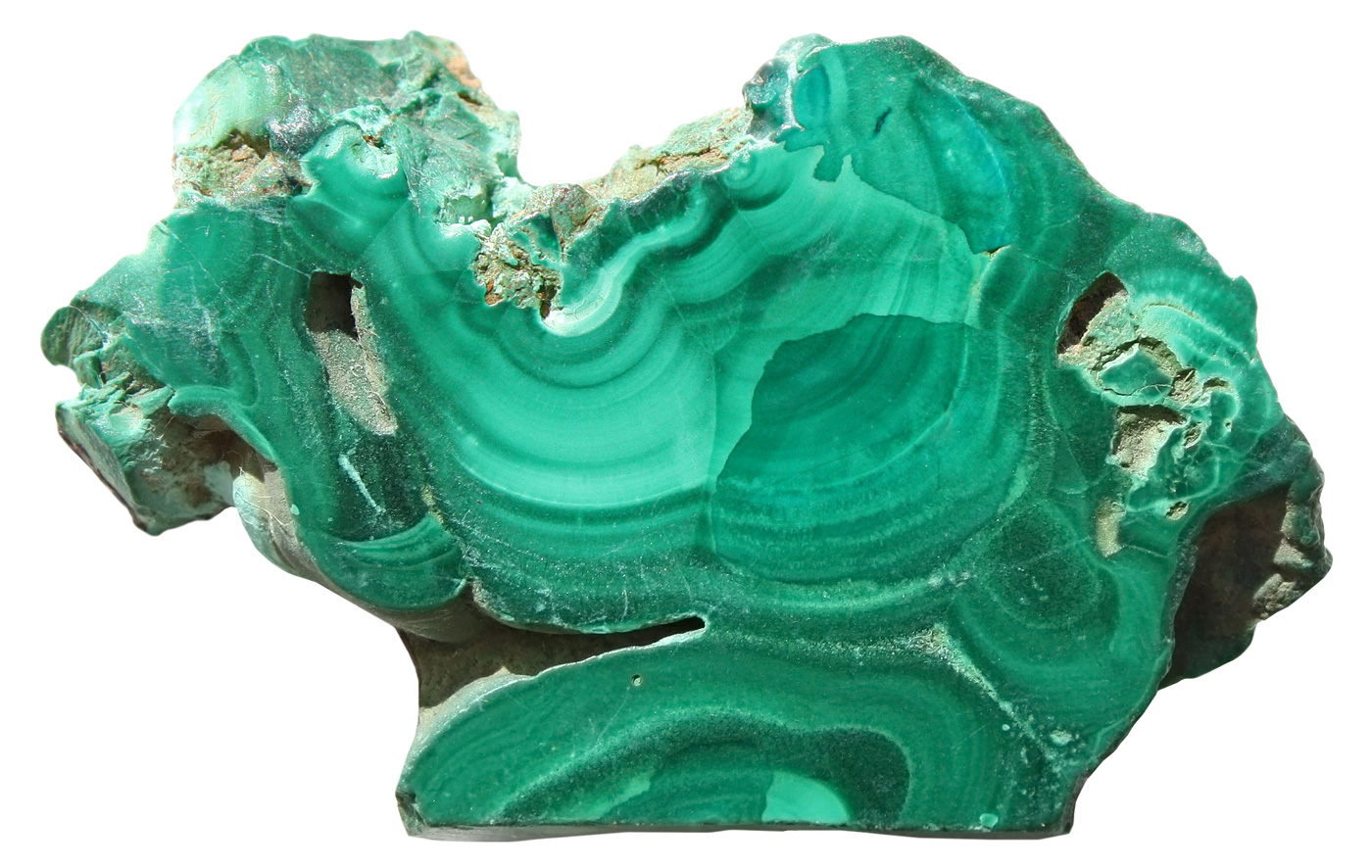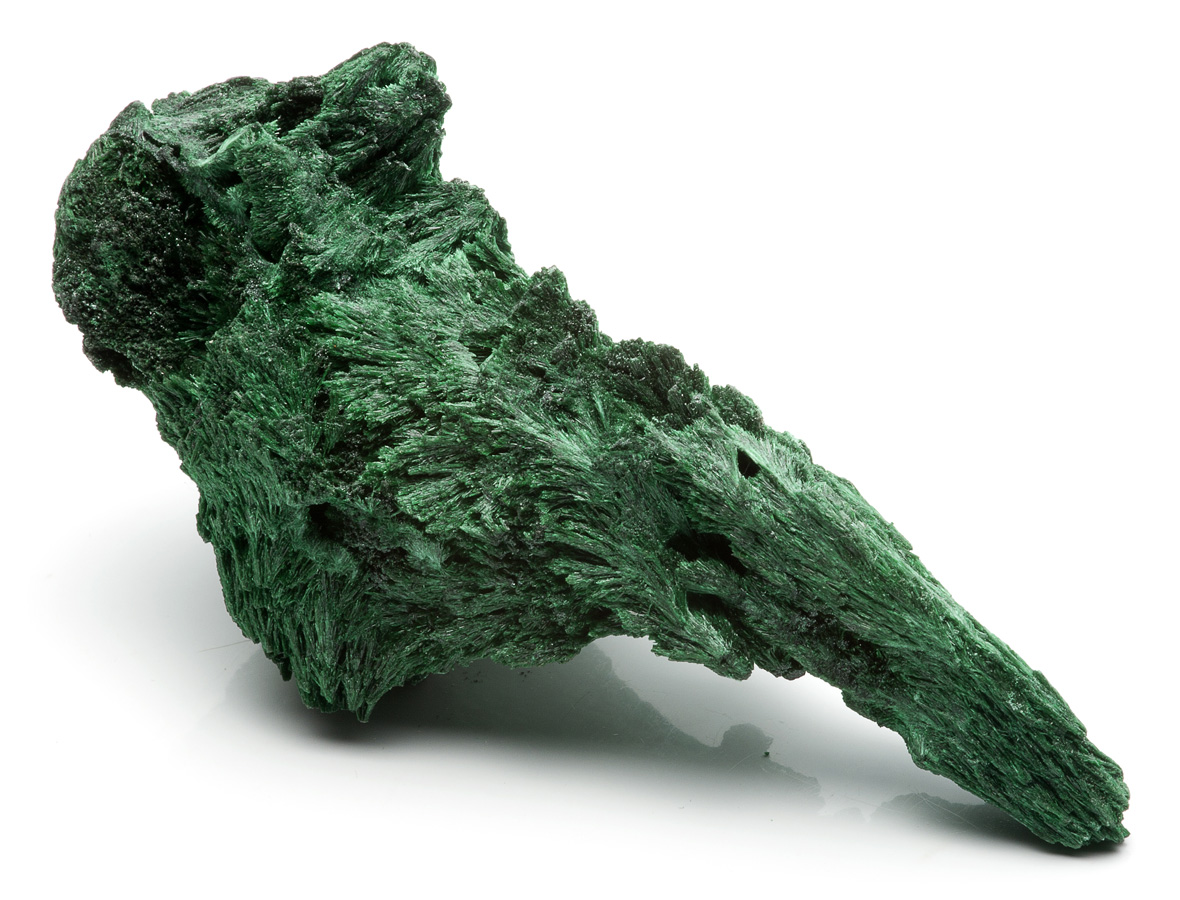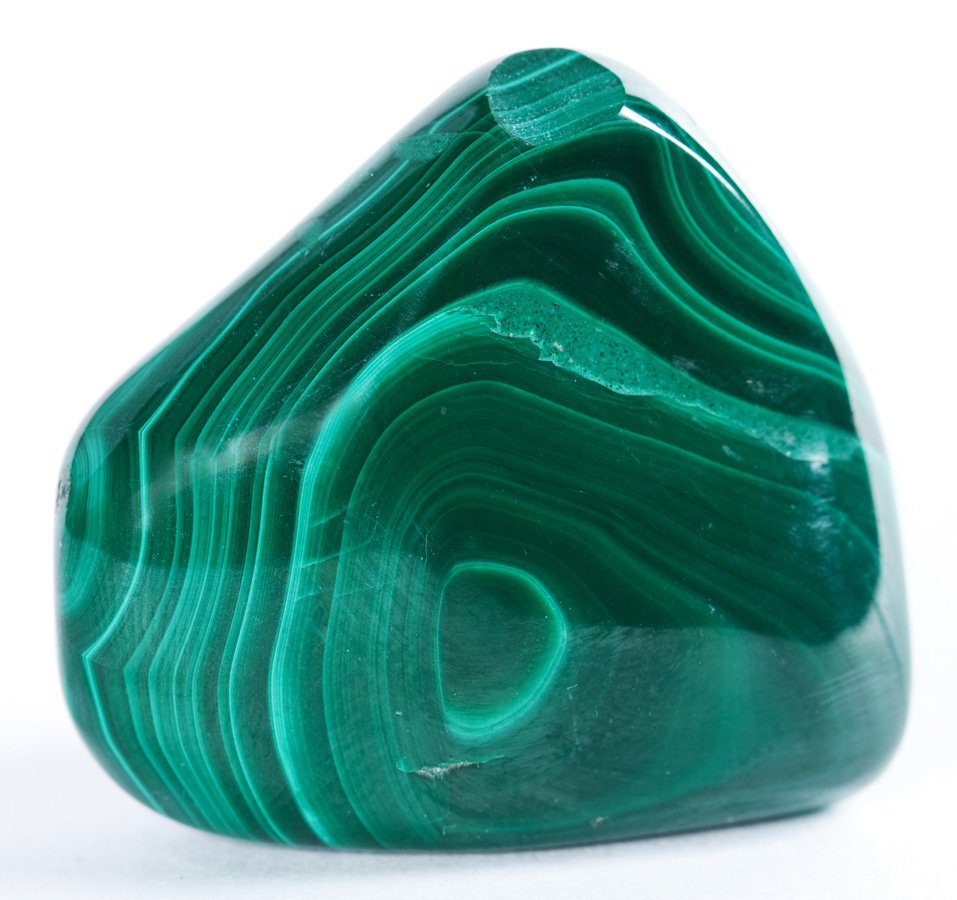Cause of Color : Copper
Chemical Composition : Hydrated copper carbonate – Cu2CO3(OH)2
Crystal System / Forms : Monoclinic System / Botryoidal masses with radiating fibrous inner structure, frequently banded, acicular crystals.
Cuts & Uses : Cabochon, beads, carvings, plaques, for inlay purposes. Sometimes cut along with the associated mineral such as azure-malachite, or along with chrysocolla.
Hardness : 4
Lustre : Sub - vitreous
Magnification : Curved and straight banding.
Optic Character : Anisotropic, D.R.; Biaxial negative (generally opaque).
Pleochroism : None.
Refractive Index / Birefringence : 1.660 – 1.910 (Spot R.I. 1.85) / 0.250;
Simulants (with separation tests) : Azure-malachite (structure), Synthetic Malachite (elemental analyses), Green Turquoise (structure, R.I., birefringence)
Sources : Russia, Australia, South Africa, Zambia, New Mexico.
Specific Tests : Effervesces with cold hydrochloric acid.
Spectrum : Not characteristic
Synthesis : First produced in Russia by the ceramic technique. Identical to the natural malachite and cannot be identified by the routine tests.
Transparency : Translucent to Opaque.






























Leave a Reply
You must be logged in to post a comment.